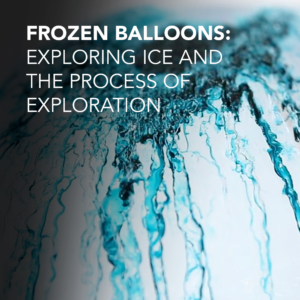Article Abstract
Compositions of mineral dust in ice cores serve as tracers of paleo-atmospheric circulation patterns, providing linkages between sources and sinks. Here we document the geochemical makeup of dust reaching continental West Antarctica, on late Holocene samples from the Siple Dome A ice core (spanning ∼1030–1800 C.E). The Nd–Sr isotope signature is unusual for Antarctic ice core dust samples. Siple Dome data are characterized by low Nd isotope ratios (as low as εNd = −16.3) along with low Sr isotope ratios (highest 87Sr/86Sr = 0.7102) compared with other Antarctic dust signatures. A well-defined inverse correlation between Sr–Nd isotope ratios indicates two primary mixing sources. The low εNd-values indicate involvement of ancient (Archean-to-early Proterozoic) continental crust, as either the direct source or as a precursor of the source, and the low Sr-values require low Rb/Sr ratios that often reflect high grade metamorphism. The known Antarctic terrane with these characteristics is parts of Enderby Land, nearly at the opposite end of Antarctica. The isotopic signature of the second end-member is compatible with West Antarctic volcanoes or Patagonia in South America. The Sr–Nd isotopes and trace element abundances are also chemically compatible with mixing between volcanic material from Gaussberg, a small lamproite volcano in Kaiser Wilhelm II Land in coastal East Antarctica whose source is ancient lithospheric mantle, with dust from Patagonia or material from West Antarctic volcanoes. We assess these potential mixing scenarios and conclude that Siple Dome’s unusual geochemical signature can best be explained by a mixture of Patagonian dust and a Gaussberg-like source, with additional minor contributions from old eroded Archean-to-early Proterozoic bedrock sources such as those in Enderby Land. Moreover, Siple Dome dust compositions are distinct from dust deposited on Taylor and Clark Glaciers in the McMurdo Dry Valleys of the western Ross Sea, precluding the Dry Valleys as a late Holocene dust source to this region of the eastern Ross Sea.
What we know: Dust from the Earth’s crust can be blown by wind and deposited on glaciers and ice sheets.
Why it’s important: Measuring dust in ice cores is important for scientists because the chemical properties of the dust can tell us where the dust originally came from. Knowing the original source of the dust tells us about wind patterns and how they might have changed.
How the research was done: Here, scientists measured the chemical properties of dust from an ice core in Antarctica. They focused on two special elements called strontium and neodymium that can help to pinpoint the original sources of dust.
What the evidence shows: The results show that the dust at this ice core site comes from ice-free areas in Antarctica as well as from South America. In particular, some of the dust comes from some very unique rocks on the opposite side of Antarctica – an important finding for future ice core and climate scientists.






